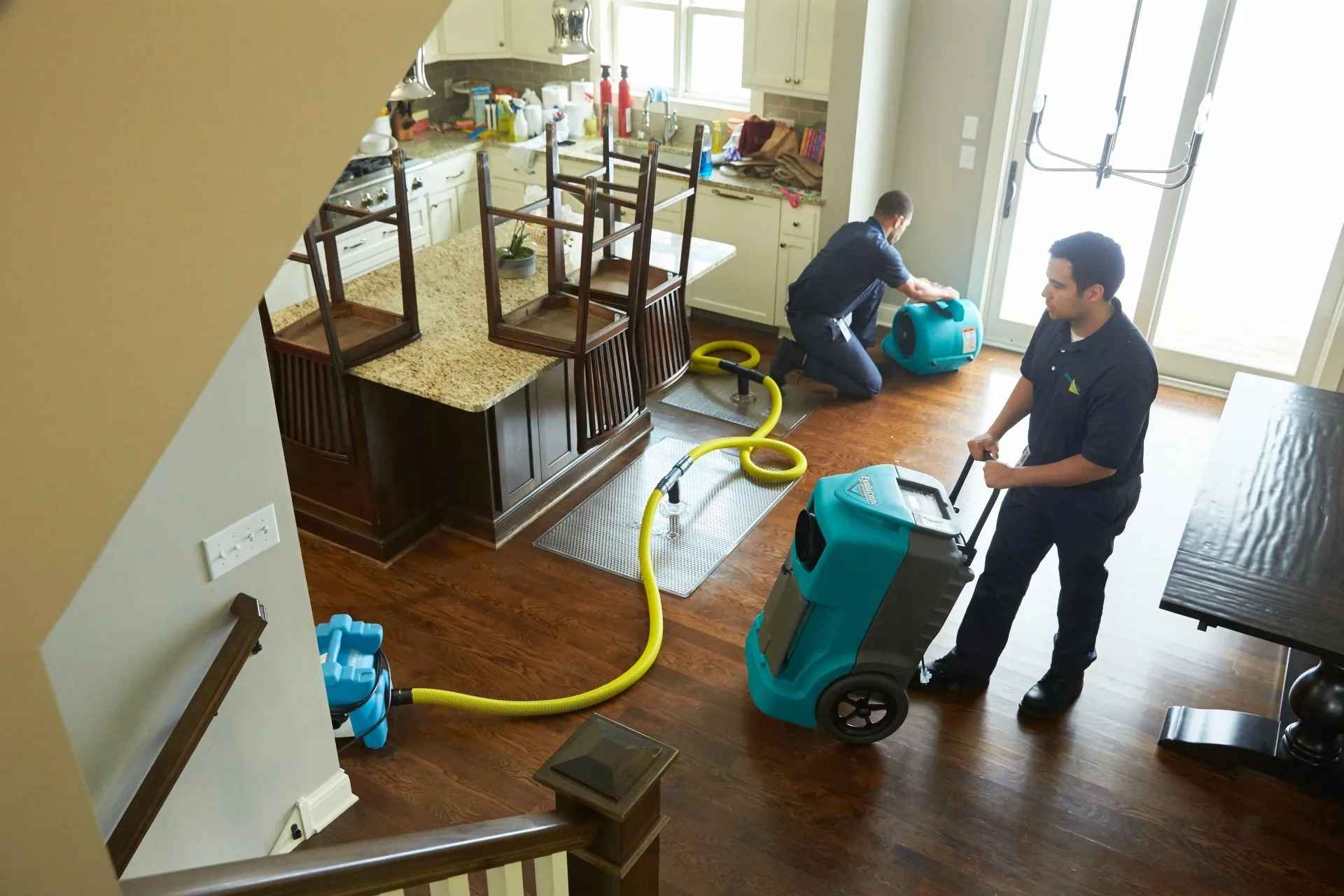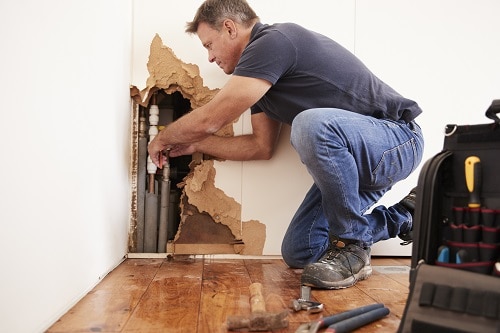Why professional Flood Cleanup Services matter after major flooding
Wiki Article
Water Damage Restoration 101: Recognizing the Process and Cost
Water damage can strike suddenly, leaving home owners in a state of complication. Comprehending the reconstruction process is crucial for efficient recovery. From assessing the damage to picking the best company, each step affects the total result and cost. Aspects such as the kind of water damage and necessity also play a considerable role. What are the particular methods used in reconstruction, and how can one get ready for possible expenses?Sorts Of Water Damage

Preliminary Evaluation and Inspection

Water Removal Strategies
Following the initial evaluation, efficient water removal strategies are utilized to minimize damage and stop further concerns. These strategies include making use of specific devices such as industrial-grade vacuums and completely submersible pumps - Water Damage Restoration. The selection of approach depends on the volume of water present and the kind of products affected. For standing water, submersible pumps are normally used for rapid removal, while vacuum cleaners are suitable for drawing out water from carpets and upholstery. In addition, progressed techniques like water removal floor coverings might be utilized for hard-to-reach areas - Flood Cleanup Services. The objective is to remove as much water as feasible, reducing the capacity for mold development and structural damage. Motivate and effective water extraction is crucial in the total water damage remediation procedureDrying and Dehumidification Process
As soon as the water extraction is total, the drying and dehumidification procedure ends up being crucial to bring back the afflicted location. This stage generally employs industrial-grade dehumidifiers and air movers to effectively lower moisture degrees. The dehumidifiers pull in wet air, removing excess humidity, while air moving companies circulate air to increase evaporation. Tracking tools is typically utilized to track moisture and temperature level levels, making sure perfect drying out problems. The duration of this process can differ relying on the extent of the water damage and environmental elements. It is vital to completely completely dry all affected materials, including walls, flooring, and furnishings, to protect against mold growth and architectural damage. Appropriate implementation of this step is important for a successful remediation result.Cleansing and Disinfecting Damaged Locations
When the drying out procedure is full, a comprehensive preliminary evaluation and assessment of affected areas is crucial to determine contamination levels. Effective cleansing strategies and proper items need to then be employed to remove particles and discolorations. Sanitization and sanitation techniques are necessary to ensure that hazardous pathogens are removed, restoring the area to a secure condition.Preliminary Evaluation and Inspection
Before starting any type of restoration initiatives, a comprehensive preliminary analysis and inspection of the impacted locations are essential for effective cleansing and sanitizing. This procedure involves recognizing the extent of water damage, establishing the source of the water breach, and evaluating the materials influenced. Assessors generally search for indicators of mold growth, structural integrity issues, and damaged items. The analysis likewise consists of checking wetness degrees using specific equipment to assure no hidden water pockets stay, as these can bring about further issues. Documenting the findings is necessary for planning the following steps in the remediation process. A comprehensive initial assessment makes it possible for reconstruction specialists to design a targeted technique this page for efficient cleaning and sanitizing, inevitably lessening damage and wellness risks.Cleaning Techniques and Products
Effective cleaning and sterilizing of water-damaged locations call for a selection of strategies and items tailored to the specific materials influenced. For permeable surface areas like drywall and carpets, removal approaches are vital to get rid of excess dampness, adhered to by deep cleansing with specialized cleaning agents. Non-porous products such as floor tile or metal can be cleaned making use of commercial-grade cleansers that efficiently remove impurities. Steam cleansing is one more efficient method, particularly for carpets and upholstery, as it uses high temperatures to eliminate microorganisms and mold and mildew (Flood Cleanup Services). In addition, eco-friendly items are increasingly preferred for their safety and efficiency - Water Extraction And Drying. Ultimately, choosing the suitable cleansing techniques and products not just ensures instant sanitation yet additionally help in stopping additional damage and health and wellness dangers associated with water intrusionSanitization and Disinfection Approaches
When dealing with water damage, proper sanitization and sanitation methods are vital to ensure the security and health of the afflicted setting. After preliminary cleaning, surface areas must be treated with ideal disinfectants to eliminate microorganisms, mold, and germs that thrive in damp conditions. Common approaches include using EPA-approved chemical anti-bacterials, which can be used with splashing or cleaning methods. In addition, ultraviolet (UV) light systems can efficiently disinfect locations by reducing the effects of bacteria without rough chemicals. The choice of technique frequently depends on the sort of materials impacted and the extent of contamination. Inevitably, complete sanitization not just restores a risk-free living area yet also assists protect against future health dangers connected with remaining dampness and mold growth.
Fixings and Restoration Options
Evaluating the damage brought on by water direct exposure is crucial for identifying the proper fixings and remediation choices. House owners may face various concerns, consisting of harmed drywall, warped flooring, and compromised structural elements. Depending on the level of the damage, repair services might include replacing sections of drywall, mounting brand-new flooring, or reinforcing structural beams. In situations of serious damage, total replacement of afflicted products could be essential. In addition, professional restorers typically suggest utilizing wetness meters to evaluate covert moisture levels prior to selecting the most effective training course of activity. It is essential to act promptly to stop mold and mildew development and additional wear and tear. Selecting the best options not only brings back the property but additionally ensures long-term safety and capability.Variables Affecting Restoration Costs

The degree of water damage directly affects the restoration sets you back property owners can anticipate to incur. Variables such as the source of the water, the period of direct exposure, and the affected products significantly influence rates. Tidy water damage from a broken pipe is typically much less pricey to restore compared to damage caused by sewage. Furthermore, the degree of contamination determines the demand for specialized cleansing and disposal solutions, better increasing costs. Geographic place also contributes, as regional labor prices and schedule of remediation services can differ. Ultimately, the necessity of the response affects prices; quicker interventions typically lead to lower total costs by preventing further damage. Understanding these variables is essential for homeowners when estimating repair prices.
The 3 main types of water damage are categorized based on contamination levels: clean water, gray water, and black water. An extensive initial analysis and examination are crucial steps in the water damage reconstruction procedure. For standing water, submersible pumps are usually used for rapid elimination, while vacuum cleaners are suitable for drawing out water from carpets and furniture. The level of water damage straight affects the restoration sets you back home owners can expect to sustain. Tidy water damage from a damaged pipe is normally less expensive to recover compared to damage caused by sewer.
Report this wiki page